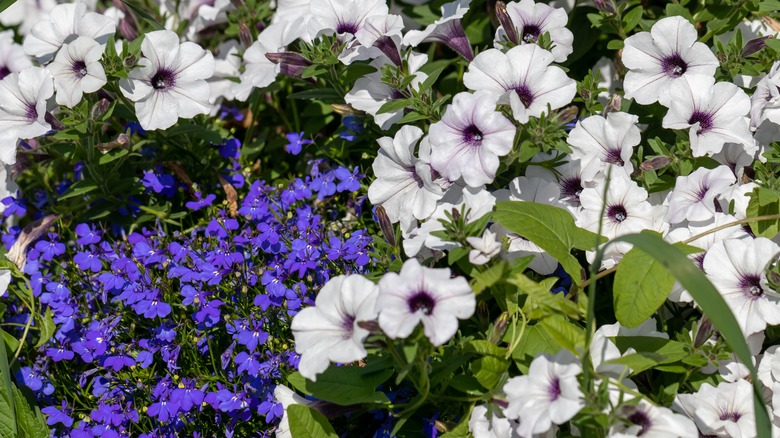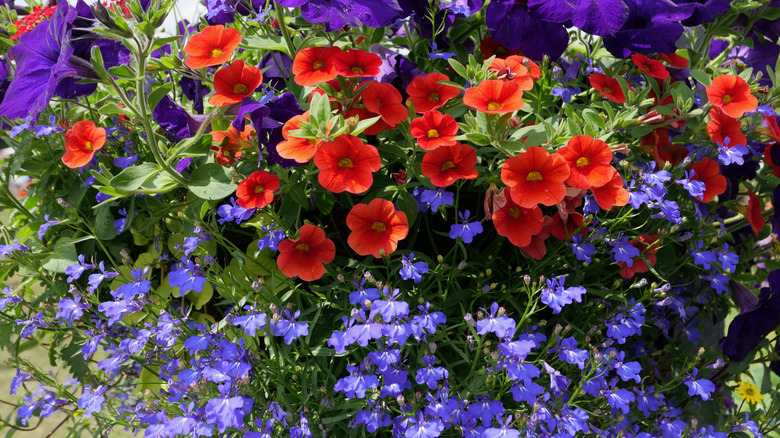Petunias are classic flowers you’ll see in many ornamental gardens and patio planters. They’re easy to care for since they don’t ask for much regarding soil and water. They do need plenty of sunshine, and finding gorgeous flowers that have the same requirements can be a bit of a challenge since many elegant-looking flowers ask for a bit more TLC. Lobelia erinus, or trailing lobelia, however, has what it takes to hang out with the petunias.
Trailing lobelia requires more water than petunias do, but it’s not so much that the petunias will be unhappy. You can put the two plants together in containers or flower beds. Since they have different growth habits (lobelia trails while petunias clump), they complement each other nicely and make the perfect pair that will stand out from the rest of your garden. Lobelias come in beautiful shades of blue, pink, white, and purple, and petunias are available in almost any color you can imagine, including black. When you combine the two, you’re sure to have something special.
How to keep petunias and lobelias happy

Keeping like-minded flowers together is ideal for low-maintenance gardening, and that’s precisely what you’ll get with lobelias and petunias. Each flower grows well in sunlight or partial shade but will perform better with as much sunlight as possible. Water the plants when the soil is dry on top. Both plants are resistant to drought but don’t let it get too dry because lobelias will dry up before petunias do. If you choose spreading petunias, you’ll need to water them more frequently than the typical clumping kind. These may work better with the lobelias’ schedule, but you’ll need to consider the trailing habits of each plant when choosing the container size.
Petunias spread out to at least 1 foot, except for the spreading petunias, while lobelias only spread out to 6 inches. If you want them in a container together, you should have a 12-inch diameter pot so they have enough room. Lobelia will trail down the sides, so you can leave most of the planter space for the petunias.
Maintaining your perfect pair

These two flowers are an ideal pair because they require very little maintenance, making them ideal for hanging baskets and hard-to-reach flower beds. Lobelias are self-pruning, meaning they drop their flowers when they’re done blooming, so you don’t have to worry about it. Supertunia petunias are also self-pruning, so if you choose them as the lobelia companion, you really only have to worry about watering. Even though these plants are practically carefree, deadheading the spent flowers will encourage them to grow more blooms. If you can’t get enough flowers in your life, take the time to prune them anyway. Since lobelias and petunias are annuals, leave some spent blooms behind if you want them to drop seeds and come back next year.
Give your plants some fertilizer periodically to keep them happy and healthy. A slow-release fertilizer once or twice a year should suffice, or you can use a liquid fertilizer at the time of watering. Follow the directions on the fertilizer package to ensure you don’t overdo it. Petunias aren’t picky about soil quality and nutrients, and lobelias don’t need much fertilizer, so you won’t have to put in too much effort to feed them correctly.



